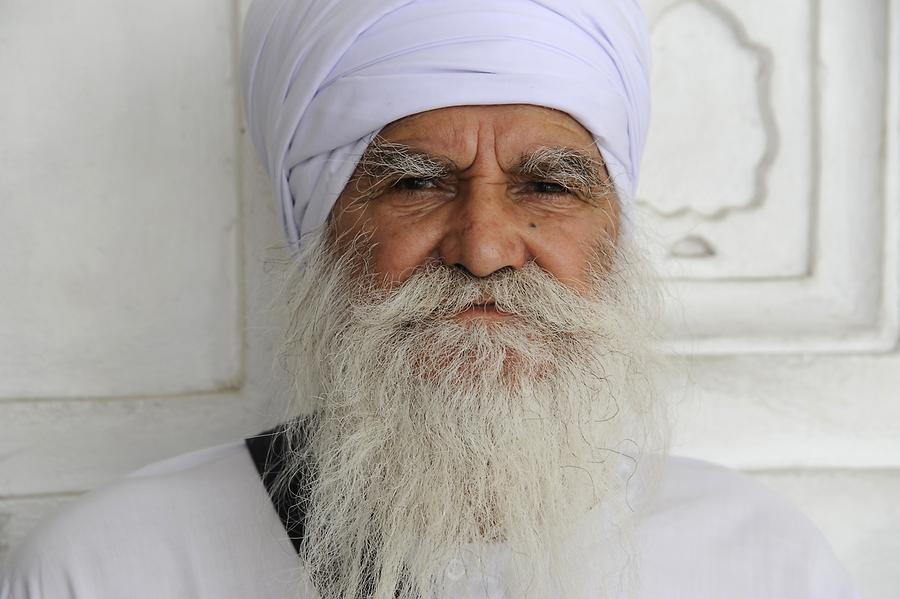Sikh#

Sikh, July 2011, © Gerhard Huber, under CC BY-NC 4.0 +Edu
Obwohl die etwa 25 Mio. Sikhs hauptsächlich im Punjab leben und weniger als 2 Prozent der indischen Bevölkerung ausmachen, haben sie unser Bild des Inders wohl mehr geprägt als alle anderen Volksgruppen. Das Paradoxe an der Situation ist, dass die Sikhs selbst großen Wert darauf legen, sich von den Indern zu unterscheiden. Die Männer dokumentierendies traditionell durch die fünf K:
- kes
- das niemals geschnittene, unter einem Turban getragene Haar sowie der ungestutzte Bart
- kangha
- ein Kamm aus Holz oder Elfenbein
- kirpan
- ein Dolch
- kara
- ein stählerner Armreif und
- kachera
- die kurze Kniehose.
Although the approximately 25 million Sikhs mainly live in the Punjab and make up less than 2 percent of the Indian population, they probably have shaped our image of the Indians more than any other ethnic group. The paradox of the situation is that the Sikhs themselves set great store by being different from the Indians. The men traditionally document this through the five K:
- kes
- the never cut hair worn under a turban and the untidy beard
- kangha
- a comb of wood or ivory
- kirpan
- a dagger
- kara
- a steel bangle
- kachera
- the short breeches
Thus, the Sikhs embody discipline, diligence, pride and pragmatism. This flawless image, however, cracked in 1994, when two Sikhs from the bodyguard Indira Gandhis murdered the Prime Minister. Ten years earlier, she had violently evicted the Golden Temple occupied by radical Sikhs. The carnage claimed more than 3,000 lives and was instrumental in making many of the temperate Sikhs increasingly radicalized. Since then, terror has played a recurring role in the struggle for the independent state of Khalistan. As early as the beginning of the 19th century, the Sikhs ruled over their own kingdom in the Punjab, a tightly organized military theocracy, which was conquered in 1849 by the British.